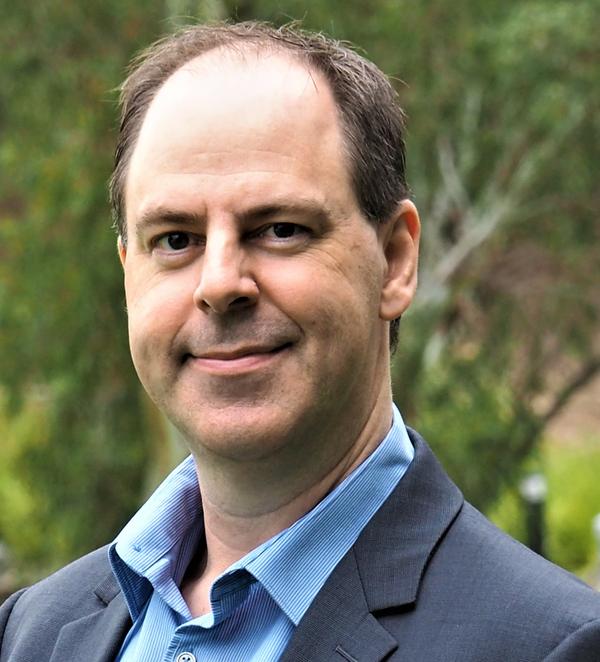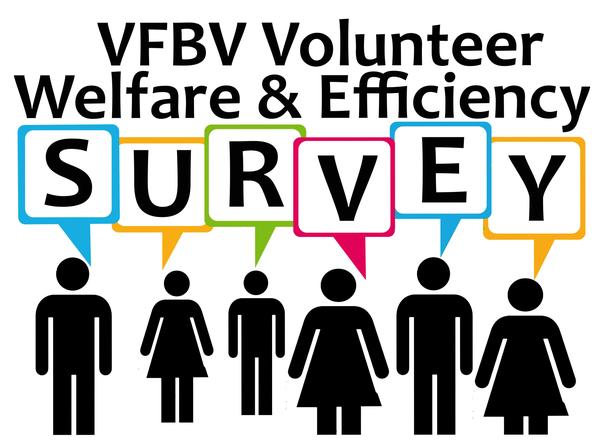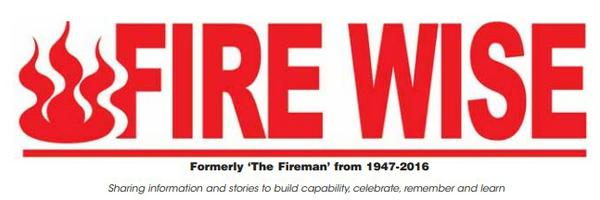At October’s State Council meeting, delegates reaffirmed our long-standing approach to advertise for expressions of interest to our
Joint Committee’s and approved the opening of this year’s expression of interest process.
The embracing of the broader membership through our peak consultation forums is one of the key features of VFBV I am most proud and ensures our consultative arrangements are broad and consultative and not just an echo chamber or an endless self-affirming feedback loop.
For those who may be unaware, CFA and VFBV have established eight joint committee’s that link CFA’s key organisational units to VFBV and our members which facilitates CFA to meet its obligations set out in Section 6 of the Country Fire Authority Act.
Our joint committee processes embody the commitment agreed and enshrined through the Volunteer Charter, where we have committed ourselves to use and apply the Charter in the spirit of mutual respect and goodwill and to work together in that spirit to resolve any disputes which may arise between CFA and volunteers by reference to the key principles set down in it.
And while the third signatory to the Charter is still missing in action (government) with the closure of the sectors only volunteer consultative forum, CFA and VFBV have agreed to ensure we each live up to our commitments and obligations and continue to strengthen our relationship.
The scope of the CFA/ VFBV Joint Committees is to ensure genuine volunteer participation, advice and involvement early in the decision-making process on all decisions intended to be made by CFA that impact or have the potential to affect volunteers.
They are a key mechanism for CFA to discharge its statutory obligation to consult with the elected representatives of volunteers on all matters which may impact upon them including proposed policy, legislation and the adequacy of resources to enable volunteers to deliver CFA services.
In late 2021 - CFA and VFBV entered high level discussions about how we could strengthen our consultative processes, and uplift accountability, transparency and collaboration. The intent was to better align our consultative structures with the IAP2 spectrum of public participation and increase our participation goals to the higher end of the spectrum towards the involve and collaborate tiers.
This involved a considerable restructure and an
affirmation that in order to overcome the historical issues of CFA departments often working in separate silos’, that each of our committees would remain subject matter based, and the terms of reference would enshrine an obligation on CFA to ensure appropriate subject matter expertise and authorising environment through the provision of executive level chairs.
This restructure breathed new life into our joint committees and went a long way to restoring our confidence that the CFA executive was serious about pivoting to a more volunteer centred workforce and living up to its consultative obligations.
As I reported at last months AGM, our committees are the engine room of our consultative structures, and on reflecting on the previous twelve months - they collectively met 32 times throughout the year, which is a conservative figure as we have not included working parties. Our committees involved more than 85 volunteer delegates across the state, with every district and region represented, and accounted for more than 10,000+ volunteer hours freely given to
working with CFA to improve things and make things better.
And to put the massive year we have had in perspective, over the past 12 months VFBV has consulted and reviewed 24 revised standard operating procedures, one new CFA policy, overseen the remaking of the CFA regulations,
facilitated 2,115 volunteers to complete our annual volunteer survey, and gathered and considered more than 4,300 items of individual feedback.
Our joint committees progressed over 100 individual issues throughout the year, many out of sight and out of mind, but collectively
amounting to significant progress on topics raised by brigades through our statewide District Council networks. Eighty-eight of these topics are covered in our annual report.
On my dark days I despair how long some things seem to take to progress, until I remind myself that CFA has
not been master of its own destiny for a very long time now. Many of the improvements require government support through investment or resources, and the diverse makeup of our 1,200+ brigades present a challenging environment to find solutions that suit every community.
And it’s not
all smooth sailing. There are still topics where we find ourselves at loggerheads with CFA, but one of the strengths of our relationship and shared history is that we continue to work through these issues with each trying to understand the perspective of the other.
Overall - a
massive year all up, and one where volunteer unity also reached new levels with our highest rate of brigade support in our 140- year history – proving that there is more that unites us than divides us. And while we can’t possibly please every single person every single time, this is more a reflection that sometimes we are simply unable to find consensus among volunteers due to the broad diversity of our brigades and number of individuals. But I think it speaks volumes that brigades are able to
put these differences aside and appreciate that we are stronger together – even when we do disagree.
In total, a record 1,239 brigades and groups affiliated last year representing in excess of 95% of all brigades sending a strong message to government and the sector that volunteers
will always back volunteers.
Strong advocacy to government also reached a new peak, with VFBV being required to advocate on numerous issues such as the expansion of presumptive cancer legislation following our successful work that saw Victoria’s scheme expanded to include three female reproductive cancers. And while good progress, we have been required to continue our fight for fair treatment for volunteers suffering mental injury with our
continuing work to see PSTD added to the presumptive scheme similar to other states across Australia.
Victorian firefighters should not be any less protected than other firefighters across the country, and sadly under current arrangements they are. Our National Body, the Council for
Australian Volunteer Fire Associations also continues to advocate to the federal government, asking them to take a leadership role in bringing the list of cancers covered by the State’s disparate schemes together. Cancer does not discriminate so why should our legislation. But the sad reality is depending on where you are in Australia, what you are covered for, for how long and how you access it are all very, very different.
Other topics requiring a large amount of effort has been our continued advocacy on the deteriorating CFA budget and ageing CFA fleet; the controversial emergency services tax and volunteer rebate scheme; the ministerial determination on the Fire District Review Panel’s recommendations; the Fire Services Implementation monitors annual workplan and
monitoring; the EMV volunteer engagement review; the CFA regulation 10 year sunsetting review; and volunteer treatment under the Fiskville redress scheme.
And while consultation requires patience and endless good will, it is also some of the most rewarding work we do. Many of the
things and threats we are able to influence never see the light of day, as we are committed to working with CFA in a spirit of solving our differences quietly. It is a relationship built on respect and trust and has stood the test of time.
But every now and then, when our consultative
processes have been exhausted, we are left with no choice but to expand our advocacy broader or to more public facing comms. Our commitment to our members is to exhaust all other options first, but if we are simply unable to achieve some kind of consensus with CFA, then we reserve the right to take the matter further.
You have seen this over the last 12 months in our work on volunteer compensation in particular with CFA having now returned to the table and discussing improvements in line with the concerns we raised last year. I will
have more to say about this as discussions progress, but is a wonderful example of our persistence on a matter close to volunteer hearts. In many respects members rarely think about what’s in place should they become injured while conducting CFA activities, so it is very much up to VFBV to be proactive to ensure if you do find yourself in need, the systems and processes are fair, and best support you returning to a full life post injury and recovery.
To finish up where I started, I would urge members to consider whether they have the desire to contribute to our joint committee processes for the year ahead. District Councils have been encouraged to have nominations returned to them by Monday 17th November 2025, to allow time for the District Council prioritisation process prior
to submission to the VFBV Executive Officer by Monday 24th November 2025.
If you have an interest, I would urge you to discuss with your local State Councillors, VFBV Support Officer or District Council Executive member. You can also find out more via the VFBV website.







